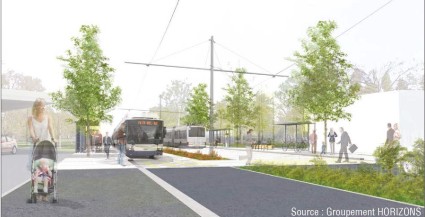
Genève, Cologny, Chêne-Bougeries – Axe de Frontenex – Projet d'espace public et d'implantation d'une nouvelle ligne de trolleybus

Prioritizing, securing, optimizing: traffic light regulation is a powerful tool, provided it is mastered and aligned with the mobility strategy of the agglomeration. For nearly 50 years, Transitec has supported local authorities with recognized expertise in traffic signalization and Intelligent Transportation Systems (ITS).
Our areas of expertise:

Avenue Auguste-Tissot 4
1006 Lausanne
Switzerland
+41 21 652 55 55